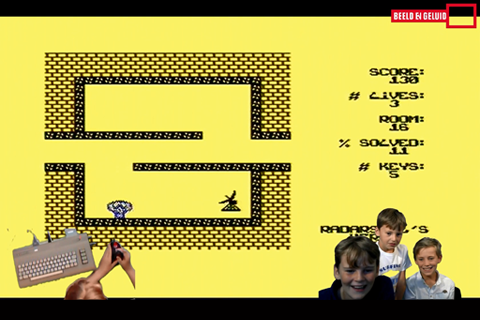Game On! at DIGRA FDG conference 2016

The 2016 DIGRA FDG conference took place in Dundee from 1st - 6th of August. With good reason: place where the Sinclair ZX Spectrum was fabricated, birth ground of Grand Theft Auto producer Rockstar Games and a university that’s often cited as having the best game design-department in Europe (Princeton reviews).
Together, DiGRA (Digital Games Research Association) and the Foundation of Digital Games (FDG), resemble one of the largest gathering of game scholars world wide. Around 300 people gathered for a conference packed with paper and poster presentations, keynotes and an exciting social programme.
Game preservation
From a game preservation perspective it was interesting to see how the field of game studies has developed into a mature academic effort, that feeds on a myriad of academic approaches. I met cultural anthropologists, computer scientists, philosophers, psychologists, game designers, historians and even a theologian(!). It makes one realize that all these disciplines have their own methods and therefore requirements for an archive of games.
One of the talks that most obviously related to preservation had to do with the use of source code of games for research. Ea Christina Willumsen, from IT University of Copenhagen, showed a number of use cases and asked the question whether these research questions could have been answered if not for a close reading of the source code. There seems to be relatively limited interest in the source code among researchers but this might also be due to a lack of skill.
 During the conference there was also an exhibition at the Museum of Contemporary Art in Dundee about the work of artist duo Jodi’s work with variations on the classic game Jet Set Willy. A ZX Spectrum and manual were provided to the visitor and one could play and try at will.
During the conference there was also an exhibition at the Museum of Contemporary Art in Dundee about the work of artist duo Jodi’s work with variations on the classic game Jet Set Willy. A ZX Spectrum and manual were provided to the visitor and one could play and try at will.
Explicit mention was made of preservation during one of the keynotes. Ju Row Farr, from the artist collective Blast Theory, spoke about a number of their participatory projects that made use of particular hard and software, specifically created for these artworks. When the question about the preservation of these works was asked by the audience she admitted that quite a number of these works, despite their best efforts of archiving them would no longer run the way they were once built. She said that the question they are facing now is: “What does archiving mean in terms of changing the work?” There seems to be a sense of realism that however hard we try, something will get lost in the act of preservation.
Game On!
Game On! was presented to a small group of people, the slides can be found here. The focus of the short presentation was on our sub-project in which we record video’s of gameplay (so called Let’s Play video) to preserve something of the historically situated event of gameplay. People found it interesting that we choose to let present day audiences play old games from the 80s. In our research we will closely monitor and evaluate the implications of this decision.
 Example of a Let's Play video.
Example of a Let's Play video.
All in all it was an interesting time, though I had hoped and perhaps expected that preservation of games would be higher on the agenda among game scholars, and feature more prominently at a conference such as this one.
More information
- Tweets about the conference can be found at #digrafdg
